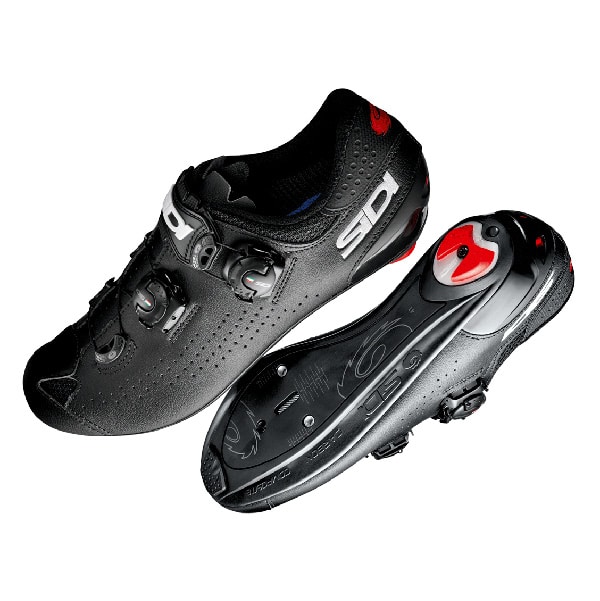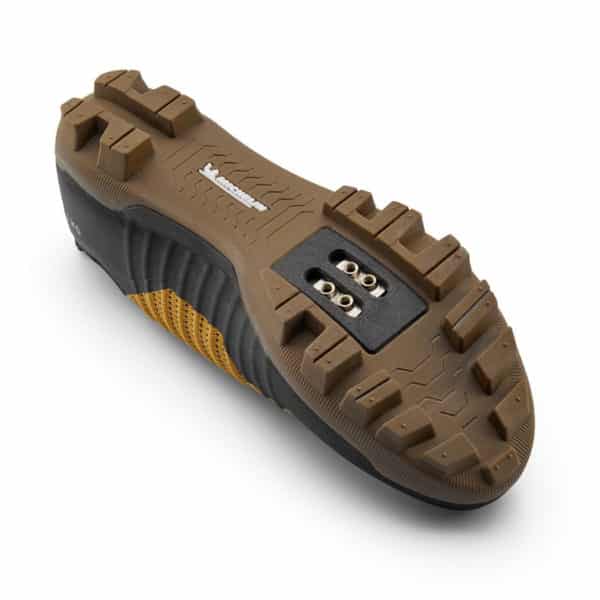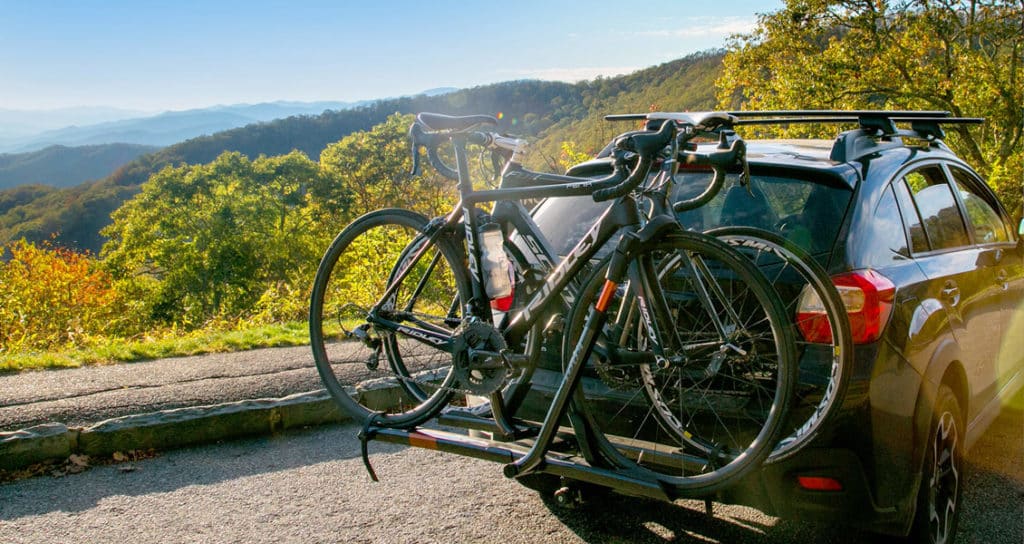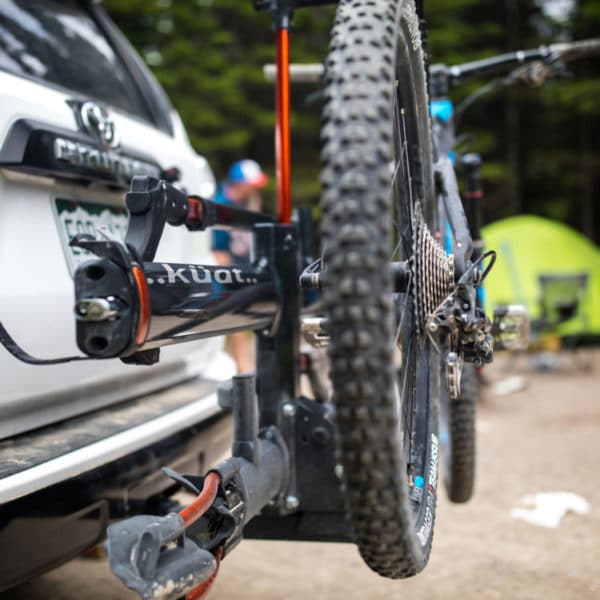If you've ever found yourself caught in a crowd of hardcore cyclists (and, on behalf of those hardcore cyclists, let us be the first to offer our deepest condolences), then you have probably been treated to a fierce debate on the role of cycling shoes in fueling overall riding performance (as an aside, we - cyclists - appear to take too much delight in our colourful debates: Tube Or Tubeless Tires?, Are Cycling Power Meters Worth It?, Do I Really Need a Fancy Bike Computer?).
In this beginner's guide to cycling shoes, we attempt to cut through the noise and get down to what matters: Do they really make a difference when riding?
But, first, let's start at the beginning: What do we mean by 'cycling shoes'?
These aren't your typical running shoes (however fancy those might be), but rather are footwear specifically designed for riding a bike. These cycling shoes (which feature cleats on their soles) are meant to be used with specialized pedals that enable a rider to 'clip into' their bike thereby transforming you into a physical extension of your bike (gulp!). If you've ever been a bystander to a peloton or local shootout rushing past you (or even just a cyclist or two), then you've probably heard the distinct 'clicking' sound as cyclists clip in and out of their bikes.
Bike shoes (particularly those designed for more intense racing efforts) are designed with stiffer soles compared to ordinary shoes, which enable more efficient energy transfer as you pedal. The benefits of these soles are fully noticeable when you try to switch back to your old running shoes for a casual ride and it feels like you aren't going anywhere. You'll also feel a wee bit awkward in these shoes on your walk from your bike to the coffee shop where you and your buddies refuel at the halfway mark of your Saturday morning group ride, but it's manageable!
Because it is difficult to separate the cycling shoe itself from the cleats and pedals that complement them, we'll address them all (albeit at a high level) in this beginner's guide.

Although the thought of being physically attached to your bike could seem daunting at first blush (we've all had the distinct joy of forgetting to unclip while coming to a stop only to find ourselves tumbling to the ground in an awkward semi-panic), there are a number of benefits of gearing up with proper shoes when you ride.
Our top reasons for jumping on the cycling shoe bandwagon?
The first, and most obvious, benefit of these specialized shoes is that they enable the use of clipless pedals - and these drive enhanced performance on the bike, which we will describe in more detail below. It seems like a leap at first, but - once you've used them for a while - you wouldn't dream of going back.
Because cycling shoes enable the use of clipless pedals, they provide for the ability to pedal more efficiently with each stroke. When this happens, you activate more power transfer from your foot to the pedal - and this enhanced performance is what the more serious cyclists typically seek out in their shoes (as they arguably do with all their gear - from their aero jerseys to their race-ready helmets, to their on-the-bike nutrition, and more).
It's hard to overstate the perceptible boost of power from which you benefit when riding with proper shoes (and complementary clipless pedals). This is because the location of the clips on your shoes forces your feet into an optimal position on the pedal for transferring power from your foot to the bike. Moreover, because your shoes are attached to the pedals, it's easier to engage your hamstrings (try engaging your hamstrings while wearing ordinary running shoes - it's a bit of a tall order), which activates the 'lifting up' motion while you pedal.
The fact is, you can't pedal in circles - a full 360 degree angle - with ordinary shoes. Instead, you typically only push down. Without being clipped in, it's hard to pull up (makes sense, right?). But, with the proper shoes enabled by the right pedals, you benefit from what is commonly referred to as 'pedaling circles', which is the act of applying force all the way around your pedal stroke (just try riding a bike after getting used to pedaling circles, and you'll know what we mean).
Beyond this, the stiffer soles of proper bike shoes optimize power transfer from your foot to the pedal (that's because the lack of flex saves energy), which ultimately, propels you forward - faster.
Cycling shoes, supported by clipless pedals, can be safer (for one, your foot is less likely to slip off the pedal in rainy riding conditions), but only once you have mastered them. If you're a beginner and have to suddenly unclip from the bike for whatever reason (the classic example is if you're rolling up to a stop sign and want to put one foot on the ground until it is safe to proceed), it can be somewhat more difficult because you haven't yet mastered the muscle memory of a simple outward heel turn.
Beyond these benefits (most of which are underpinned by the clipless pedals that complement the shoes), there are other advantages that are specific to the shoe itself.
In particular, bike shoes hold your foot firmly in position. They provide a secure fit around the heel and even weight on the instep of your foot. For example, the SIDI Fast Road Shoes (which really are synonymous with speed) feature SIDI's TECHNO-3 SYSTEM dials that fit along the entire length of the shoe, adapting the upper of the shoe to the shape of the foot for a customized fit. Plus, SIDI's reinforced heel cup stabilizes and supports the heel. The anatomically-shaped material reduces heel slippage (that annoying feeling of your shoe slipping off) and provides increased power transfer. Last but certainly not least, the shoe provides foot protection in the event of a crash.
That's not it. Depending on the specific shoe you opt for, they (like the DMT KRSL Road Shoe) offer lightweight, breathable designs that eliminate painful pressure points between the shoe and your foot. DMT's KR4 Road Shoes are even designed with breathable mesh for ventilation to help you keep cool on those summer scorcher rides.
These are just a few of benefits against which your ordinary running shoes simply can't compete. Think about it: Have you ever seen any of the road pros scaling up La Super Planche des Belles Filles in the Tour de France with their running shoes?
And, if mountain biking is more your style, MTB shoes share many of the benefits of road shoes, but with improved walkability, real tread for those hike-a-bike sections, and increased protection against painful toe-on-rock collisions. With the right MTB shoe, you can almost walk like a normal person at the inevitable store stop.

So, what type of shoes are the right fit for you?
When shopping for the right shoes for you, beware that there is no one-size-fits all. This is pretty obvious for the shoe itself, but this applies to the pedals, too (together, these are your pedal system - that is, the combination of pedals and compatible shoes).
Let us elaborate: Cycling shoes are paired with a compatible pedal to secure your feet to the bike. Typically, the shoes have either three-bolt or two-bolt cleats that you clip into clipless pedals (yes, it's a bit oxymoronic) - and you need to match the right shoe (or cleat) with the right pedal. Cleats are the component of the pedal that attaches to the bottom of your cycling shoe (the cleats are what actually clips into the pedal). There are cleats that are compatible with both three- and two-bolt clip-in systems (this should be specified on the shoebox or product description). If you're opting for high quality specialty shoes, however, they may only connect to one or the other.
As an extra layer of complication, SPEEDPLAY users will be quick to point out that there are also four-hole designs, which often require an adapter added to a three-hole shoe.
The type of shoes (and clip-in system) you choose will depend on the bike you ride, which typically corresponds to the type of cyclist you are (aka a roadie, an MTB'er, a commuter, or even an indoor cyclist - we're not judging; we are Canadian after all).
As a general rule of thumb:

Road cyclists chasing maximum pedaling efficiency will want to opt for proper road cycling shoes, with their larger cleat mechanism and broader contact points. Generally, three-bolt cleats, which protrude out from the bottom of the road shoes, attach to the pedals. A three-bolt cleat system offers the most stability and energy transfer because it spreads the force being applied to the pedal over a wider surface. More casual cycling shoes (and those for mountain bikes), on the other hand, use two-bolt cleats. Remember to do your homework to ensure your shoes and cleats are compatible with your pedals.
Road shoes feature distinctly stiff soles (to transfer power to your pedals) with minimal tread (unlike MTB'ers that might hop off the saddle in between epic rides, roadies don't typically wander until the ride is over). Top quality options use exotic materials, like carbon fiber, for the best stiffness to weight ratio (and the higher price tag). Beyond their stiff soles, top options use other lightweight materials (like the innovative full-knit DMT Shoes, which we describe below) that offer breathability.

There are two common options for mountain bikers: Clipless cycling shoes/pedals and flat pedals.
Similar to the road shoes we described above, clipless mountain bike shoes use cleats (albeit two-bolt cleats). Like road shoes, you will need to ensure your shoes and cleats are compatible with your pedals. Whereas the cleats on road shoes protrude out from the bottom of the shoe (and, therefore, make it a wee bit tricky for strolling around when you're off the bike), cleats on mountain bike shoes are typically recessed into the sole, which makes it easier to wander away from your bike or scramble up a steep embankment). Compared to road shoes, which are precarious for walking, mountain bike shoes have more tread for increased traction.
Flat pedals are wider and are complemented by shoes that have a sticky rubber sole, but no cleats. The sole is designed to enable enhanced traction between the shoe and the pedal. Because flat pedals don't require you to clip in or out, they make it easier to hop on and off the saddle (which are more suitable if you're out for a leisurely ride, or those learning to scream down their local DH run).
This might depend on how skilled you are at clipping in and out of your bike (if, like us, you've ever tried to clip into your road bike on the busy streets of, say, Toronto, then you're probably painfully aware of the 'stop-go-stop-go' cadence of cycling in and around the city). If you want to get from point A to point B efficiently and you're adept at clipping in and out, then it's an option. Otherwise, if it's more about the journey than the destination for you, you might want to hold onto your runners.
This is dependent on the indoor cycling equipment you're using (for example, if you have your outdoor bike set up on an indoor trainer, then - needless to say - you can simply use the same pair of pedals for indoor and outdoor riding). Some two-bolt clip-in pedal systems that are used for MTB are compatible with select indoor cycling set ups, too. Generally, indoor or outdoor, we encourage the riders we work with to learn to pedal those circles - you'll engage more muscles and be a faster virtual rider.
Once you have narrowed down the type of shoe and clip-in system that will suit your cycling needs, you should seek out the right fit (which probably applies to any shoes you purchase). Luckily, cycling shoes come in a wide range of shapes and sizes.
At NOMAD, we carry our two most favourite cycling shoe brands: DMT (the brand sported by pros, like two-time Tour de France winner, Tadej Pogačar) and SIDI.

DMT has been producing knitted footwear for major sports and fashion brands for more than 10 years. In 2018, after 12 months of development, they transferred knit technology to the world of cycling by producing the first cycling shoe with a fully knitted upper (cool, right?).
DMT is renowned for its Engineered 3D Knit technology, which enhances the way the shoes 'feel'. Slipping your foot into a pair of DMT knit shoes will totally change your conception of cycling shoes. These are lightweight (they don't have that 'stiff' upper feeling about them because of their elastic design) and less bulky; provide increased breathability (just think of those sizzling summer days); and dry more quickly.
DMT offers the rare combination of fit and support without compromising performance. That's why the pros trust the brand, when the stakes couldn't be higher, to usher them onto the podium.
If you've ever watched a world tour road or MTB race, the Olympics, or even motocross, then you've probably been witness to SIDI in action gracing the feet of legends like Chris Froome, Egan Bernal, Sonny Colbrelli, and many, many more.
SIDI is world-famous for designing some of the most advanced technology in cycling. From proprietary tension dials to replaceable non-slip heels and vented carbon sole technology, its cutting edge offerings are the result of 60+ years of innovation and hand-crafted know-how.
If you have wide feet and need wide cycling shoes, consider the SIDI Genius 10 Mega Road Shoes, which pack more volume.
There are other bike shoe features to consider to ensure they fulfill your unique needs, such as:
Like any shoes, the other features you choose will depend on your own personal preferences and cycling needs (for example, you could have a strong aversion to laces from a bad experience with your laces wrapped around your crank as a kid... true story... and be more partial to dials or straps, or vice versa).
Naturally, a consideration is cost. In fact, one of the primary reasons cyclists even have this debate is because of the cost of the shoes (and the pedals you'll need in order to put your your fancy new shoes into action). Luckily, however, cycling shoes and pedals have come a long way since they ventured into the mainstream and are offered across a wide range of price points (from the flashy, expensive shoes sported by the pros, to the mid-range, to the more affordable options). Suffice it to say, like anything, you get what you pay for (a higher price point will typically buy you more, such as lighter weight material, enhanced protection, and higher performance).
So! What's the verdict? Are they worth it? Our take: If you're an avid cyclist (roadie or MTB'er) then we highly recommend it. We wouldn't dare ride our bikes without them.
Think of cycling shoes as a core component of your cycling toolkit - just as essential as your saddle, or your handlebar. True, you don't need proper cycling shoes to ride, but you'll get more out of your rides - joy and performance - with them in tow.
If you're a beginner, remember to expect a learning curve (it likely won't be as steep as the ascents we've all tried to climb on our bikes!), and that practice makes perfect - we were all beginners once upon at time. The more you ride (and the more you practice clipping in and out), the more you'll get the hang of it.
Decide what's right for you by determining the type and nature of your rides. From there, define your budget. The good news is that there are numerous options out there for virtually everyone - across a range of price points.
